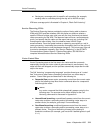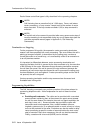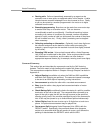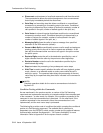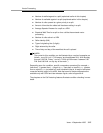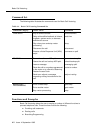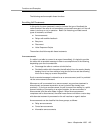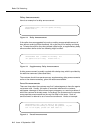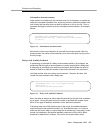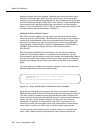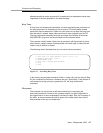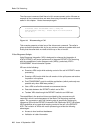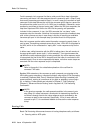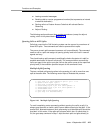
Basic Call Vectoring
4-4 Issue 4 September 1995
Delay Announcements
Here is an example of a delay announcement:
Figure 4-1. Delay Announcement
If the caller does as suggested but ends up waiting an appreciable amount of
time without receiving further feedback, he or she may tire of waiting and hang
up. To keep the caller on the phone at least a little longer, a supplementary delay
announcement similar to the one following might be used:
Figure 4-2. Supplementary Delay Announcement
A delay announcement is usually coupled with a delay step, which is provided by
the
wait-time
command (discussed later).
The customer should incorporate as many supplementary delay announcements
as he or she deems necessary, given the resources available.
Forced Announcements
There are times when the customer may find it advantageous to have the agents
not
answer calls. Usually, this option is exercised whenever the customer
anticipates a barrage of calls concerning an emergency or a service problem of
which the customer is already aware. Accordingly, the customer can incorporate
an appropriate announcement as the very first step in the vector. Such an
announcement is referred to as a
forced announcement
. Here’s an example.
Figure 4-3. Forced Announcement
announcement 2556 (‘‘All our agents are busy.
Please hold.’’)
announcement 2557 (‘‘Thanks for holding. All
our agents are still busy. Please hold.’’)
announcement 1050 (‘‘We are aware of the current
situation and are working to rectify the problem. If your
call is not urgent, please call back later.’’)



